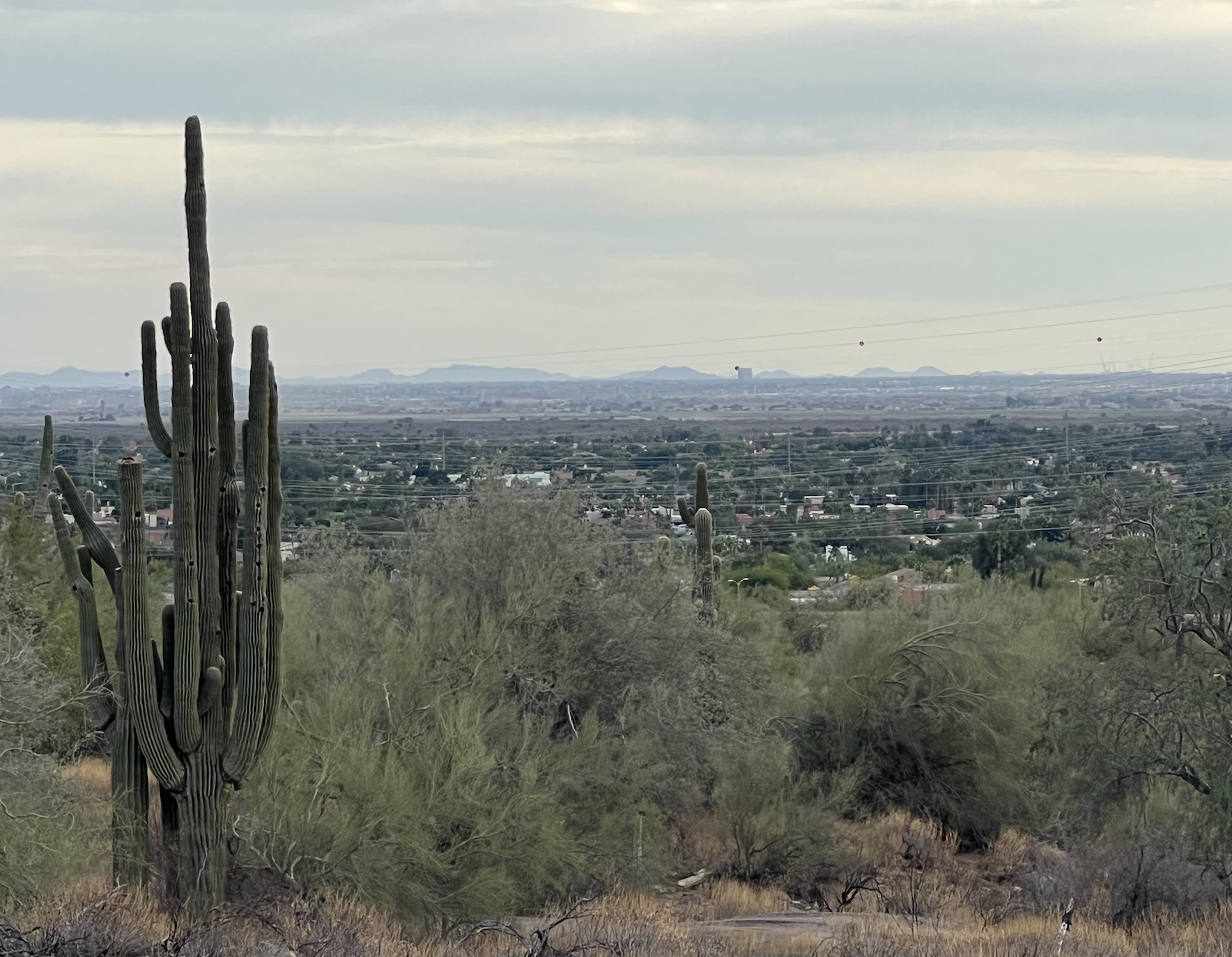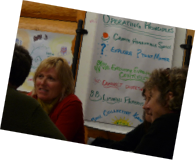PREVIOUS READINGS
2012
The Soul of Money: Reclaiming the Wealth of Our Inner Resources (Lynne Twist) — This is really a fantastic read. Great, compelling stories. Great principles and practices. Mostly about the subtitle, reclaiming a disposition of resourcefulness. I particularly like her naming the “Lie of Scarcity” and its three prominent myths: 1) There is not enough. 2) More is better. 3) That’s just the way it is. I put this one on my kid’s must read lists.
2011
Wild Stone Heart (Sharon Butala) — A gift from my new friend Alan Richards in Alberta. Lovely to journey into some of my memories of Saskatchewan. Lovely to witness a journey about awakening to seeing the invisible, both in ourselves, others, and the communities we cultivate. This passage represented some of that for me, as she explored the cairns: “I didn’t expect it would be the ‘voiceless voice’ that would explain things to me. Its utterances so far had been as enigmatic as the stone piles themselves, and while after one of them I’d feel as if a light bulb had gone on in my thick brain and new realms of thought had opened for me, any answers were answers I’d come up with myself.”
You and No Other (Jane Weiss, Bonnie Zahn) — What a delightful read, a memoir from two of my friends as they entered into a same-gender relationship together. I held my breath for them. I cried for them. I felt myself awakened to hear of their courage and love and learning. It’s a book about being true to the best of what can happen as human beings.
Water for Elephants (Sara Gruen) — A novel passed on to me, read first by my Grandmother, and then my Mom. Kind of glad to join the line. I started into it several months ago, but then got busy with other things. In seeing the movie, inspired to read a bit further. Yes, the book is quite different.
The Lost Symbol (Dan Brown) — What an amazing writer. Certainly for the story. And a good format for me with lots of short chapters that switch between main threads of the story, only to be integrated in the end. And much, much to be explored from the way he weaves Noetic Sciences into this one. Thanks Jon Gilburg for the recommend.
The Dance of Life (Victor Vernon Woolf) — Some of the stories and frameworks that my uncle, Vern Woolf, has experienced and developed in his life. I appreciate the beginnings of a framework on consciousness from a quantum perspective. I appreciate the practice of tracking to mature thoughts, memories, and emotions. Vern has committed his life to an exploration of a multi-dimensional world, and to an inquiry of what is real. It has been groundwork that has opened me to similar questions in my life, and to my commitment to understanding energetics in groups.
The Purposeful Universe: How Quantum Theory and Mayan Cosmology Explain the Origin and Evolution of Life (Carl Johan Calleman) — A book recommended to me by friend Roq Gareau. It is one that I started reading a year or so ago, but aware of this version of the Mayan calendar, naming March 8, 2011 as the beginning of the last creative periods, the Universal, I picked it up again. Calleman characterizes this last time as a oneness field, the outcome of which is not known. As I understand it the world evolves with particular new waves, originating from a cosmic tree of life. The new waves account for fundamental shifts in biology and consciousness. Each represents an acceleration of frequency from the past. I don’t remember the factor but I believe it is 20 times. Drawn to this as I have been to many other sources that blend science and spirituality.
The Wolf at Twilight: An Indian Elder’s Journey through a Land of Ghosts and Shadows (Kent Nerburn) — So much to love in this one. The form of fictional history is a great learning format for me. One of the things I loved in it is the glimpses into Lakota epistemology, ways of being, and ways of seeing. It is quite well done, I found, for showing some of the distinctions between a contemporary white person’s view, steeped in separation, and an indigenous view of wholeness. The story is of a 90 year-old Indian Elder’s search for his sister, lost in childhood when taken away to boarding schools. Informative. Sad. Compelling.
The House on Mango Street (Sandra Cisneros) — “You can never have too much sky. You can fall asleep and wake up drunk on sky, and sky can keep you safe when you are sad.” I read this one because my daughter was reading it. Lovely. About voice (“…learn to become the human being you are not ashamed of…”). About activism (“…anger, when used to act non-violently, has power…”). About home (“…home is about creating one’s desired environment…”). I loved even more what my daughter wrote about it for her class assignment. About the “storm of hindrances” that can be part of life. About integrating past to present. The beginnings of her learnings about integrating masculine and feminine and partnering. So many doorways into the learning that is becoming her life and the journey of father / daughter.
The Animal Family (Randall Jarrell) — Thanks to Ann Pelo for this one, given to me as a housewarming gift. It is a children’s book about finding home, told through the voices of a man and a mermaid sharing life with a bear, a lynx, and a boy. I quite liked the beginning words — “Say what you like, but such things do happen — not often, but they do happen.” Published the year after Jarrell died, this was one of his last works, and a Newbery Honor Award winner.
The New Parish Priest (Fr. Brian Bainbridge) — Recommended to me by Chris Corrigan for the work that I’m doing with faith communities. This is a short and simple read of shifting the culture in an Australian Catholic parish, using Open Space Technology as an operating system. From looking at the past to looking at the future. From control to shared service and offering. From “what do you want us to do, Father?” to “I’ve noticed this needs attention.” From “your” parish to “our” parish. Many stories of specific projects that began to come from the people of the parish. Nice reflections at the beginning and end on some of the learning of OS.
Angel Time (Anne Rice) — Several years ago I really enjoyed Anne Rice’s vampire series. They were about so much more than vampires. It’s been about 15 years since I’ve read her stuff. I suppose her writings here reflect an evolution in her own path and interest. What remains, though not as compelling in this book for me, are themes of separation, redemption, the question of what is real. This time, explored through the story of a hired assassin reformed into angel helper.
Babies at Work: Bringing New Life to the Workplace (Carla Moquin) — Carla is a new friend for me in Utah. She is a dynamo. This book comes from a deep passion and direct body of experience in her. I love the many levels in this book. The practicality, advantages, and challenges of starting a program. The depth of research and story. The deeper philosophy and invitation to one of wholeness. The challenge to industrial era thinking and structures of separation and efficiency.
The Art of Racing in the Rain (Garth Stein) — Loaned to me by Ginny Wiley, just right for a couple of airplane reads and a few hot baths. Just the right mix of delight to hear a story told by a dog, Enzo, and deep-hearted concern of human beings in the reality of human life. A story of family, of conviction, of humility. A philosophy of connection and integration. Background themes intelligently woven in from the world of car racing. Laughter. Aches. Tears. Smiles.
2010
Blackberries in the Dream House (Diane Frank) — Thanks Teresa Posakony for this one. It is a beautiful read. Lovely images. Some poetry. Simple. Inviting. A story of expression through flow in the arts and dreams. A story of remembering who we are across many lives, as told in this relationship between geisha girl and a zen monk, is compelling.
William Gilliland Stewart: His Life, His Message (Compiled by Bill and Maureen Woolf) — This is such a gift. A compilation of stories, writings, photographs of my Great Grandfather. Everything including migration stories (My Great Great Great Grandfather leaving during the potato famine, sailing from Ballintoy, Ireland to Canada in the 1800s. He had 15 cents in his pocket and asked the stage coach driver to take him as far into the fruit country of Niagara as he could for that amount. The next two generations lived and worked there. My Great Grandfather then migrated to southern Alberta where my Grandmother and Father were born.) A life of hard work and faith. A man who dug a root cellar by hand in his 80s. I particularly enjoyed the entries from my Grandmother, Lena Ross of her childhood.
The Hunger Games (Suzanne Collins) — This is really an entertaining read. It is written for younger audiences. I read it because my 12 year-old son was reading it. Yet I enjoyed fully and found myself wanting to sneak it away from him. It is the first in a three part series. Good suspense to the end. Good for parent / child shared reading.
Whale Song (Cheryl Kaye Tardif) — A book that my Grandmother recommended. It was a good story that went to a surprisingly deep level. On love. On loss. On life transitions. On the edges at which cultures come together.
What capacities must individuals and groups cultivate to experience emergence and create anew? An exploration of Dialogue, Theory U and Circle (Magy Oriah Nock) — Shared through the Art of Hosting list serve by Chris Corrigan. A thesis from graduate work. Some good information about circle gained from experience with Christina Baldwin and Ann Linnea of PeerSpirit. A good overview of steps and important orientations. The same for Theory U. I liked Magy’s comments at the end, “feeling a need for play and silence.” These are some of the gifts I experience in the Art of Hosting workshops that seems to deepen the quality of what emerges. I also related to her call for further future attention to shadow.
The Lost Compass: One Father’s Journey (B. Clement Makepeace) — Meg Wheatley gifted this one to me. A simple, short read. Story of a father discovering what he cares about — his relationship with his son first among them. Might read this one with my son Isaac. For the story. For the experience. For the openings that shows themselves in years to come. Noticed as symbols in the book, and thus the invitation to pay attention, to “true north.” What is the true north in my life? What becomes available is focused on this? Also like the reference to “garden as a place and a process.” Like most aspects of life, they have an outcome kind of feel as well as a dynamic ongoing process. Relationships. Reminds me of Chris Corrigan’s teachings with me about “all is practice.” Reminds me of my Uncle Vern’s teachings about all as particle and wave at the same time.









 ]]>
]]>





 ways I know to host wellness.
ways I know to host wellness.